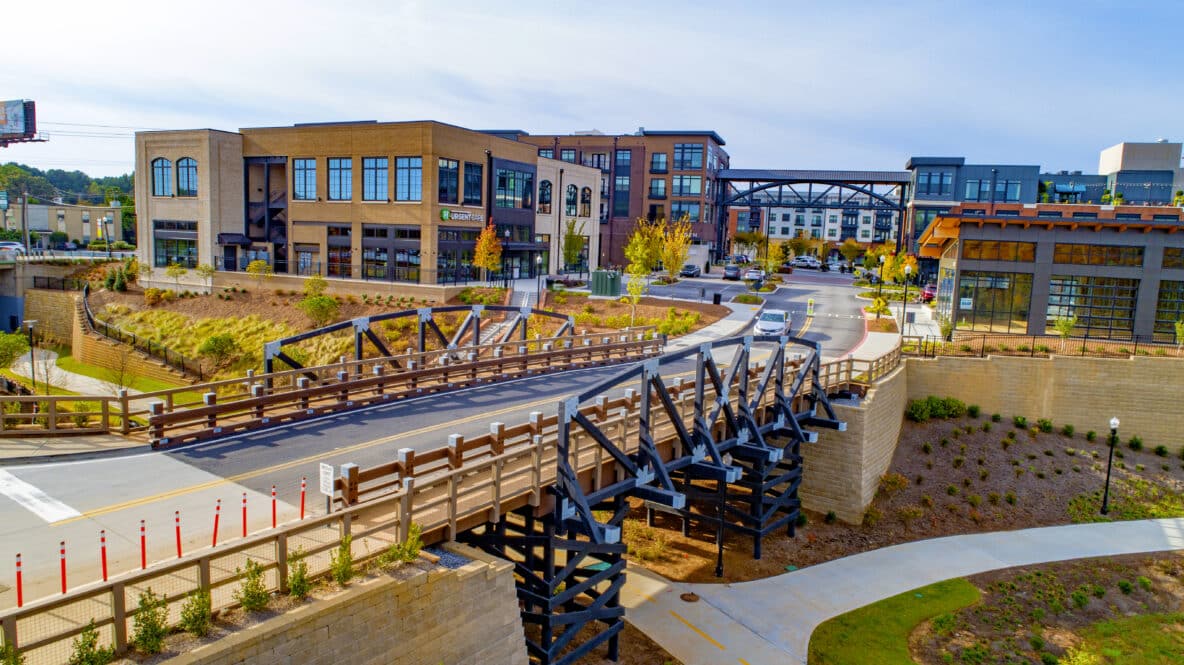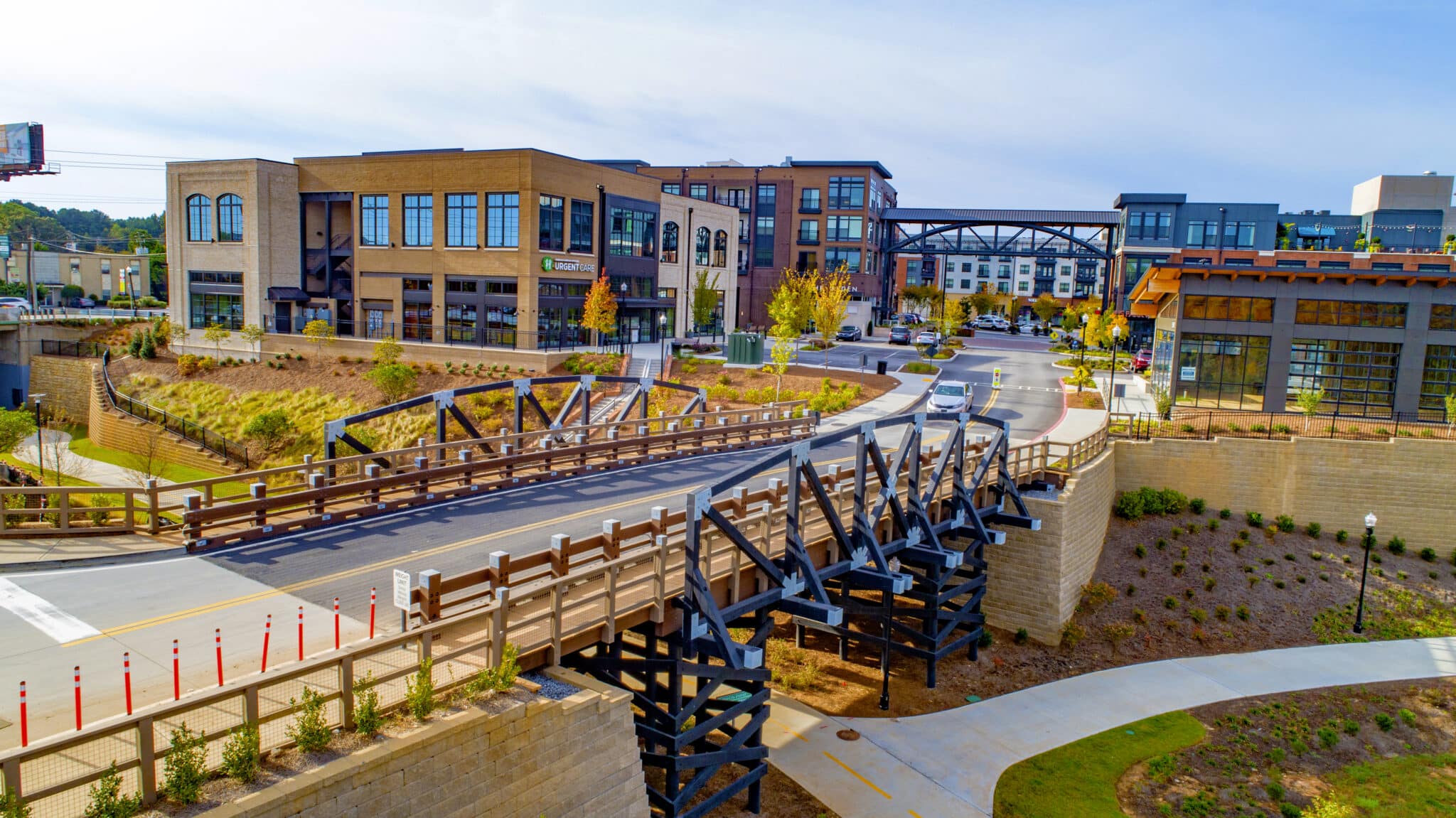
Wood bridges have been important for transportation for many years, changing from basic log designs to advanced engineering structures. People value wood bridges for their beauty, history, sustainability, and versatility in construction. They are used in many different building projects.
As worries about the environment and sustainability increase, wood bridges are becoming a popular choice over concrete and steel. This comprehensive guide explores the design, construction, and sustainability of wood bridges, highlighting their benefits and future potential.
The Evolution of Wood Bridges
Historical Background
Wood has been used as a construction material for bridges since ancient times. Early examples include simple log bridges, where fallen trees were placed across streams to facilitate passage. As civilizations advanced, so did the complexity of wood bridge designs. By the Middle Ages, timber truss bridges became common in Europe, employing more sophisticated engineering techniques to span greater distances and support heavier loads.
The Renaissance of Timber Bridges
In the 19th century, the advent of covered wooden bridges marked a significant evolution in wood bridge construction. These bridges, enclosed to protect the structural timber from the elements, became widespread in rural America and Europe.
The use of wood in bridge construction continued to evolve with the development of laminated timber beams and the use of treated wood to increase durability. This allowed for longer spans and higher load capacities, making wood bridges a popular choice for many infrastructure projects.
In modern times, wood bridges are still utilized in both rural and urban settings, blending seamlessly with natural surroundings and providing a sustainable and aesthetically pleasing alternative to steel and concrete structures. With advancements in technology and engineering, wood bridges continue to be a viable and cost-effective option for crossing rivers, streams, and other obstacles. The timeless beauty and versatility of wood as a construction material ensure that it will remain a staple in bridge design for years to come.
The 20th century saw a decline in timber bridge construction because of the rise of steel and concrete. Interest in wood bridges has recently increased. This is due to advancements in wood technology. There is also a growing focus on sustainable building practices.
Design Principles of Wood Bridges
Structural Integrity & Load Distribution
Designing a wooden bridge is complicated and needs careful thought about weight distribution, material qualities, and environmental conditions. Wood is flexible and strong, making it useful in places with earthquakes or strong winds. It is more flexible than steel or concrete.
The bridge design needs to support the weight of the bridge, vehicles, people, wind, and water. It must handle both still and moving loads. Below are common design types of wood bridges. Explore more about the different types of wooden bridges.
Common Design Types
- Beam Bridges: The simplest form of wood bridge, beam bridges consist of horizontal beams supported at each end by piers. These bridges suit short spans and people commonly use them in rural and remote areas.
- Truss Bridges: Truss bridges use interconnected triangles to distribute load across the structure. This design is highly efficient, allowing for longer spans and heavier loads. Common truss designs include the Howe, Pratt, and Warren trusses.
- Arch Bridges: Arch bridges use curved elements to transfer load from the bridge deck to the abutments at either end. The arch design is strong and attractive, making it a popular option for pedestrian bridges in parks and cities.
- Suspension Bridges: Suspension bridges use cables to support the bridge deck, allowing for extremely long spans. Hybrid designs incorporate wood for the deck and supporting elements, but they typically do not use it for the main cables.
Aesthetic Considerations
Wood bridges offer unique aesthetic advantages. Timber's natural beauty helps buildings blend in with nature, making them look better in the landscape instead of standing out. Architects prefer using wood because it offers warmth, texture, and the ability to be shaped into various forms for different designs.
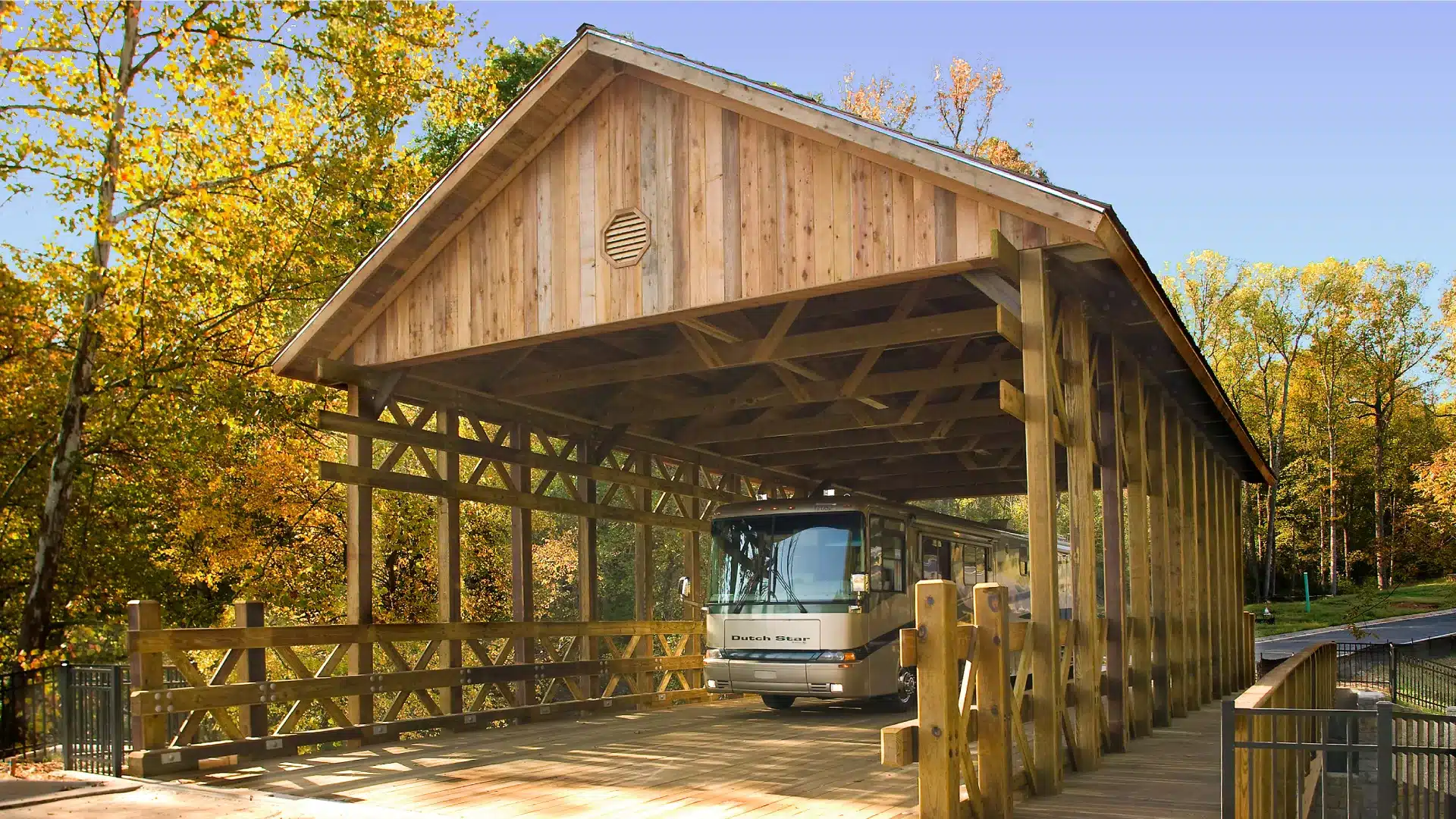
Construction Techniques for Wood Bridges
Material Selection
The choice of wood species is critical in wood bridge construction. Factors such as strength, durability, resistance to decay, and availability all play a role in determining the appropriate material. Commonly used species include:
- Douglas Fir is strong, light, and resistant to decay, making it a popular choice for building bridges.
- Southern Yellow Pine is strong and easy to work with, making it great for building and designing wood bridges.
- Tropical Hardwoods resist decay and insects, making them great choices for bridges in wet or humid areas.
Advanced Wood Treatments
To enhance the longevity and performance of wood bridges, various treatments can be applied to the timber. Pressure treatment with preservatives like copper-based compounds can protect the wood from rot, insects, and weathering. Additionally, modern wood treatments often include fire retardants, which are particularly important in areas prone to wildfires.
Construction Methods
- Traditional Timber Joinery: Old-fashioned wood joining techniques like mortise and tenon, dovetail, and lap joints have been used in building wooden bridges for a long time. These techniques rely on precise craftsmanship and do not require metal fasteners, which can corrode over time.
- Modern Joinery: Modern usage of stainless steel & galvanized steel fasteners ensure a solid connection with no corrosion to create less exposed cuts for rot and deterioration for a solid connection.
. - Modern Assembly Techniques: Contemporary wood bridge construction often incorporates modern techniques, such as the use of engineered wood products like laminated veneer lumber (LVL) and cross-laminated timber (CLT). These materials offer superior strength and stability, enabling the construction of larger and more complex structures.
- Prefabrication: Prefabrication of wood bridge components in controlled factory environments allows for higher precision, faster construction times, and reduced environmental impact at the construction site. Prefabricated elements can be assembled quickly on-site, minimizing disruption to the surrounding area.

Sustainability Of Wood Bridges
Sustainability Of Wood Bridges
Wood is a renewable resource, making it one of the most sustainable building materials available. When sourced from responsibly managed forests, wood has a much lower carbon footprint compared to steel or concrete. Growing trees absorbs carbon dioxide from the air. Even after trees are cut down and used in building, they still hold carbon, which helps reduce climate change.
Lifecycle Analysis
Lifecycle analysis (LCA) of wood bridges shows that they have a significantly lower environmental impact over their lifespan compared to bridges made from other materials. This includes lower energy consumption during material production, reduced emissions during construction, and less environmental degradation at the end of the bridge's life. Additionally, people can often deconstruct wood bridges and reuse or recycle the materials, further enhancing their sustainability.
Role in Green Infrastructure
Wood bridges are increasingly being recognized as a key component of green infrastructure. Their ability to blend with natural landscapes makes them ideal for environmentally sensitive areas, such as parks, nature reserves, and wildlife corridors. Moreover, the use of wood in bridge construction supports sustainable forest management practices, promoting biodiversity and forest health.
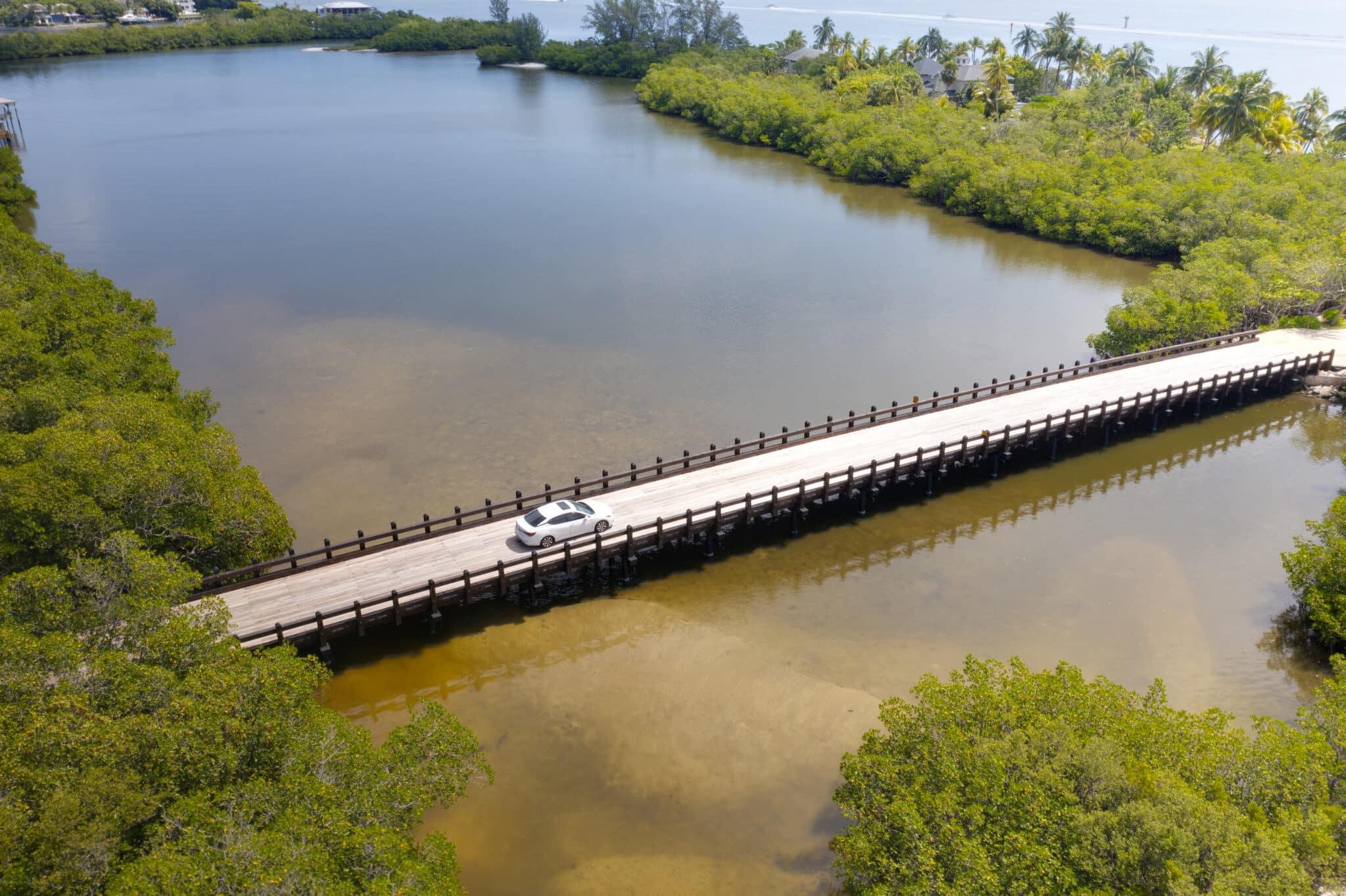
Case Studies In Sustainability
Several notable projects highlight the sustainability of wood bridges. For example, the Mandalay Timber Vehicular bridge in South Florida was constructed using sustainable timber and Design-Built to have minimal impact on the surrounding ecosystem with our Deck-Level Construction. Similarly, the Coastal Club in Delaware, was built with wood sourced from certified sustainable forests in an ecologically sensitive wetland using our Deck-Level construction with limited access.
Challenges & Solutions in Wood Bridge Construction
Durability & Maintenance
One of the primary concerns with wood bridges is their durability, particularly in harsh environments. While wood is susceptible to rot, insect damage, and weathering, these issues can be mitigated through proper design, right materials, and maintenance. Regular inspections every 2-5 years, and the application of protective treatments like our Legacy Trim, can significantly extend the lifespan of a wood bridge to over 75 years.
Load-Bearing Capacity
Understanding what your usage for your bridge is crucial. The strength of wood is pound for pound one of the strongest materials to use for bridge building. By knowing the needs of your crossing, engineers address this challenge by using correct materials and design that offer greater strength and stability. These solutions allow wood bridges to meet the demands of modern infrastructure while retaining the benefits of timber construction.
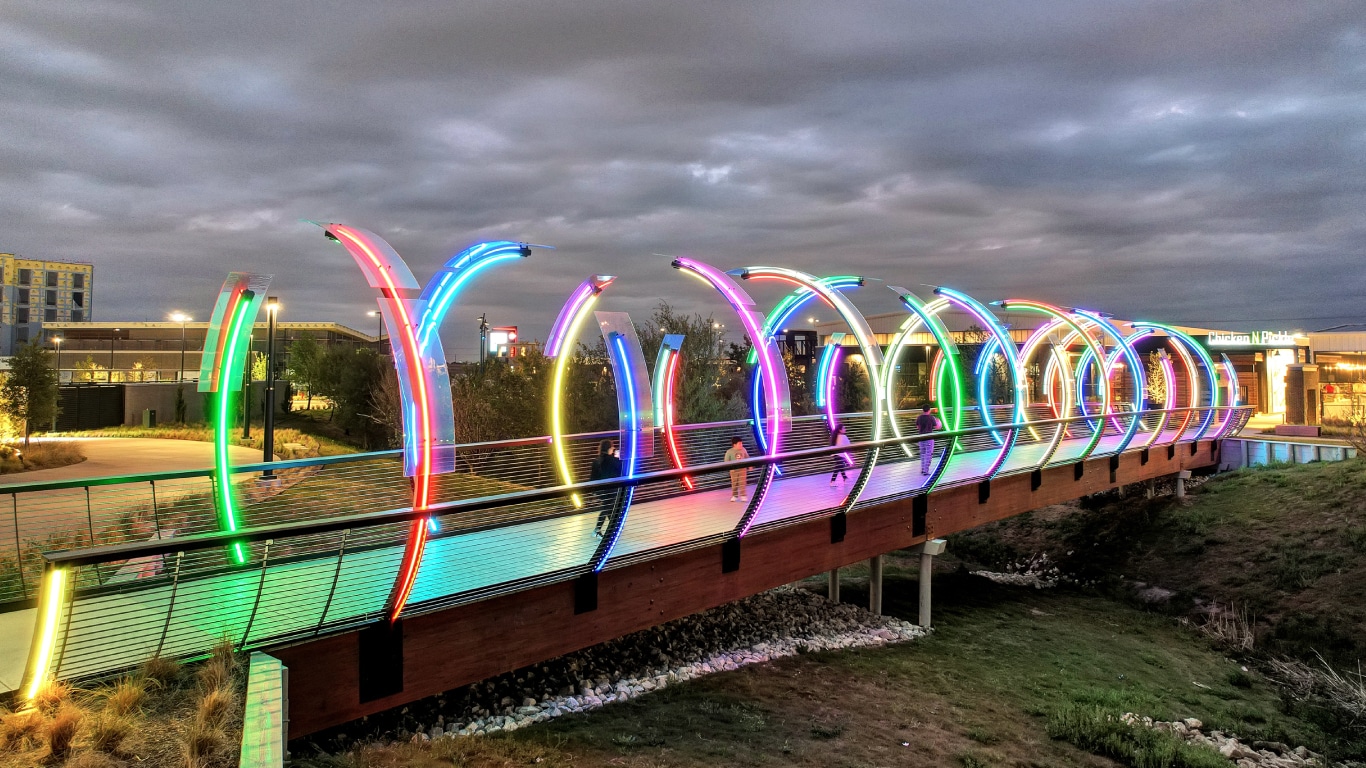
The Future Of wood bridges
Innovations in Wood Technology
The future of wood bridges is being shaped by innovations in wood technology. Engineered wood products like CLT and glulam (glued laminated timber) are enabling the construction of larger and more complex wood structures than ever before. These materials are not only strong and durable but also offer greater design flexibility, opening up new possibilities for architects and engineers.
Sustainable Development Goals
As cities and countries around the world commit to Sustainable Development Goals (SDGs), the demand for eco-friendly infrastructure is expected to grow. Wood bridges, with their low carbon footprint and renewable nature, are well-positioned to play a key role in the sustainable infrastructure of the future. By integrating wood bridges into green infrastructure plans, cities can reduce their environmental impact while enhancing the quality of life for residents.
The Role of York bridge concepts
York Bridge Concepts is at the forefront of wood bridge construction, offering innovative solutions that combine traditional craftsmanship with modern engineering. Our commitment to sustainability and excellence ensures that each bridge we build not only meets the needs of today but also contributes to a greener, more sustainable future. Whether you’re looking for a pedestrian bridge, a vehicular bridge, or a custom-designed structure, our team has the expertise to bring your vision to life.
Moving Forward
Wood bridges are a testament to the enduring value of timber as a construction material. From their historical roots to their modern applications, these structures offer a unique blend of beauty, functionality, and sustainability. As we move toward a more environmentally conscious future, wood bridges will continue to play a vital role in infrastructure development, providing eco-friendly alternatives to traditional materials. At York Bridge Concepts, we are proud to be part of this journey, helping to create bridges that are not only functional but also harmonious with the natural world.
Request A Quote For your next project
If you’re considering a wood bridge for your next project, York Bridge Concepts is here to help. With decades of experience and a commitment to sustainability, we offer a range of services from design to construction, ensuring that your bridge is built to last. Contact us today to learn more about how we can help you achieve your vision with a beautiful and sustainable wood bridge.

